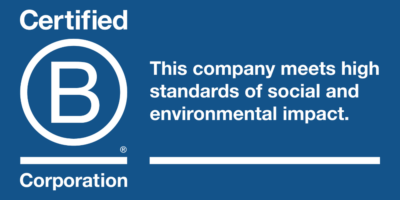It Just Keeps Going and Going.
The best way to describe the end of the third quarter is to steal the Energizer Bunny’s tagline, “it just keeps going and going…”[1] The end of September marked the longest running bull market since World War II and the longest most investors have seen in their lifetimes. Equity markets in the US were up across the board and growth stocks continued to outpace value stocks by a wide margin. (As value investors, we look forward to a reversal.)
The economic numbers overall were so good that the only problem is there is not much room left for improvement. Unemployment hit its lowest rate in 49 years, wage growth is at a 9-year high, consumer confidence stands at levels last seen 14 years ago, and the NFIB Small Business Optimism Index soared to 108.8 in August, a new record in the survey’s 45-year history. We could go on with more data, but the question remains how long this economic cycle will last. We did not think it would last this long, but with the recent tax cuts, repatriation of cash from overseas by large US corporations (much of which is being used to buy back stock in amounts that eclipse the previous high set in, wait…the peak in 2007), and no sign of a slowing economy, the market will likely keep chugging. Famous last words!
How quickly things change…
As we were putting the finishing touches on this letter the market suddenly changed moods. The extended period of low volatility and rising markets quickly turned on its head. For nine of the first ten trading days in October, the S&P 500 declined. It also notched its third 3% daily decline for the year which now sets 2018 as having more 3% declines than the entire time period from 2012 to 2017.
We get paid to worry and there are always things to worry about: international markets have been weak, trade war potential between the two largest economies in the world is intensifying, interest rates are rising, and many valuation indicators are at the high end of historical ranges. Post quarter-end, the market reacted to news on wage inflation with fear, as small cap stocks declined 4% in the first week and long-term interest rates hit levels not seen in over seven years. We have been in a low interest rate world for about a decade and the overall trend of rates has been down since the early 1980s.
Are we in store for a period of higher rates? It’s hard to say how far the Fed will raise rates to avoid inflation but owning companies that have pricing power and recurring revenues are one of the best hedges against inflation. We will continue to search for these types of companies no matter what level of inflation we have. We remain focused on looking out over several years when buying stocks and believe the names purchased this past quarter which are discussed below are more defensive in nature than the general market.
Corporate Governance
Good corporate governance is rarely discussed because bad corporate governance makes for better headlines. At its core, sound corporate governance strikes a fair balance of power between shareholders, the board of directors and management. The structure of our democratic government with its three branches balancing power is similar.
Management runs the company and leads the employees. Management also reports to the board which is ideally led by an independent board chair. The board is elected by shareholders whose job it is to keep the board “in check.” If management fails, the board has the power to replace management, and if the board fails, shareholders can vote the board out.
It is possible for management to “stock” the board with cronies who don’t act independently and rubber stamp the CEO/Chairperson’s agenda. Tesla is a good example. Elon Musk is its mercurial founder and leader who has recently made several ill-advised tweets. He mocked cave rescuers from Thailand as well as the SEC. After he lost his Chairman title in the SEC settlement, the stock rallied 17%. We believe the market viewed the separation as a check on his bad behavior.
Riverwater’s investment philosophy is based upon our Three Pillar Approach which focuses on buying (1) superior businesses with (2) exceptional management teams at (3) attractive valuations. Applying this approach to Tesla, and specifically with respect to the exceptional management pillar, one can definitely argue that Elon Musk could be considered exceptional. However, incorporated in an exceptional management review is an analysis of corporate governance and Tesla would not have passed our review on this piece. Good corporate governance is a key factor in our process and encompasses executive pay structures, related party transactions and board diversity.
We engage with companies to attempt to make a positive impact on governance. One example is a company we purchased this quarter in the SMID strategy, Virtu Financial. We thought Virtu could improve their board diversity and sent the company’s board a letter explaining our thoughts and rationale. We have yet to receive a reply but will update you should something transpire.
Data shows that, all else being equal, companies with gender-diverse boards have stronger long-term financial performance.[2] The same is true when other minority interests are incorporated into the strategic vision of an organization.[3] McKinsey’s latest research found that companies in the top quartile for ethnic, gender and racial diversity are more likely to have financial returns above their industry medians. The thinking is that diverse backgrounds can help prevent groupthink, result in diverse points of view on all topics, and therefore lead to better decisions.
LARGE EQUITY INCOME STRATEGY
We outperformed in our Large strategy this quarter, thus continuing our year-long outperformance against our benchmark.
We did not sell any stocks in the third quarter and waited until the last week to make two purchases. In the June quarter, we bought back a stock we had previously sold and did the same this quarter. We sold AT&T (T) way back in January of 2017 when it was in the low $40s. It’s now in the low $30s and we felt it was attractive again.
AT&T finally closed on its merger with Time Warner Inc. in June after a protracted fight with the Department of Justice. The new AT&T will be restructured into four segments and will be transformed into a more dynamic company with premium content in HBO, Warner Bros., and Turner Broadcasting. AT&T is a leader in wireless (it and Verizon have ~70% market share) and should benefit if Sprint and T-Mobile combine. Also, AT&T trades at a 20-year historical low P/E valuation, making it even cheaper than during the last financial crisis. The market is worried about integration of the Time Warner assets and the debt AT&T had to take on to finalize the deal. With its estimated $2.5 billion in synergies and massive cash flows, we think AT&T has ample room to pay down debt and still maintain its large dividend which yields over 5%.
AT&T is also progressing toward its 2020 sustainability goals. Examples of its efforts include 22.6% reduced carbon dioxide emissions since 2008 and 146 million recycled devices since 2007.
Disney (DIS), on the other hand, is a new name to us. It is an iconic brand that operates at the highest level of sustainability and social integrity. Disney’s 2020 sustainability goals include reducing net emissions by 50% (at 41% now) from 2012 levels, diverting 60% (at 50% now) of waste from landfills, and maintaining water consumption at 2013 levels (-1.8% now).
We are excited about Disney’s prospects with the recent Fox deal giving them an established infrastructure with scale to introduce their own direct-to-consumer streaming service in 2019, a la Netflix. This will be bolstered by their traditional businesses as they plan to invest $10 billion next year to expand their Orlando park. Additionally, they have a strong movie slate in the coming year with updates to classics like Frozen and the Lion King, plus new releases from Star Wars and The Avengers. The stock currently trades at a discount to the market P/E multiple; however, we believe its strong returns on capital and solid competitive positioning (they can consistently raise rates at their parks) should garner a premium valuation. There have been issues with their ESPN franchise, but we believe these are priced in and that the streaming service benefits plus the new FOX assets will outweigh the drag from the sports business.
SMID STRATEGY
We underperformed in SMID strategy for the quarter as well as this year.
During the quarter, we purchased Virtu Financial (VIRT), a leading financial services firm that leverages cutting edge technology to deliver liquidity to the global markets and innovative, transparent trading solutions to clients. What does that mean? Basically, Virtu as a market-maker makes more money when markets experience volatility. Generally, when markets are volatile they often go down. As such, Virtu is slightly negatively correlated to the rest of the market and we expect it would outperform in rougher seas.
After its successful integration this past year of KCG, a competitor firm, we anticipate management will continue consolidating the fragmented market making industry. Virtu’s superior asset-light business model allows it to absorb companies and then significantly cut out duplicative costs. Virtu trades at less than 13x next year’s earnings and has 4.5% dividend yield.
We appreciate your trust and confidence in us and please reach out should you have any questions or know of anyone you think would have an interest in our services.
All the best.
Adam Cindy Laura Matt Nathan
[1] https://en.wikipedia.org/wiki/Energizer_Bunny. According to Wikipedia the mascot of Energizer actually sold more Duracell batteries as 40% of Duracell customers thought the campaign was selling Duracell and Energizer sales declined during the years the ads ran.
[2] Blake, Lynn. “Corporate Boards: Where are the Women?” statestreet.com https://listen.statestreet.com/detail/2017/women-corporate-boards.html
[3] Hunt, Vivian. “Why Diversity Matters.” McKinsey&Co. www.mckinsey.com/business-functions/organization/our-insights/why-diversity-matters








